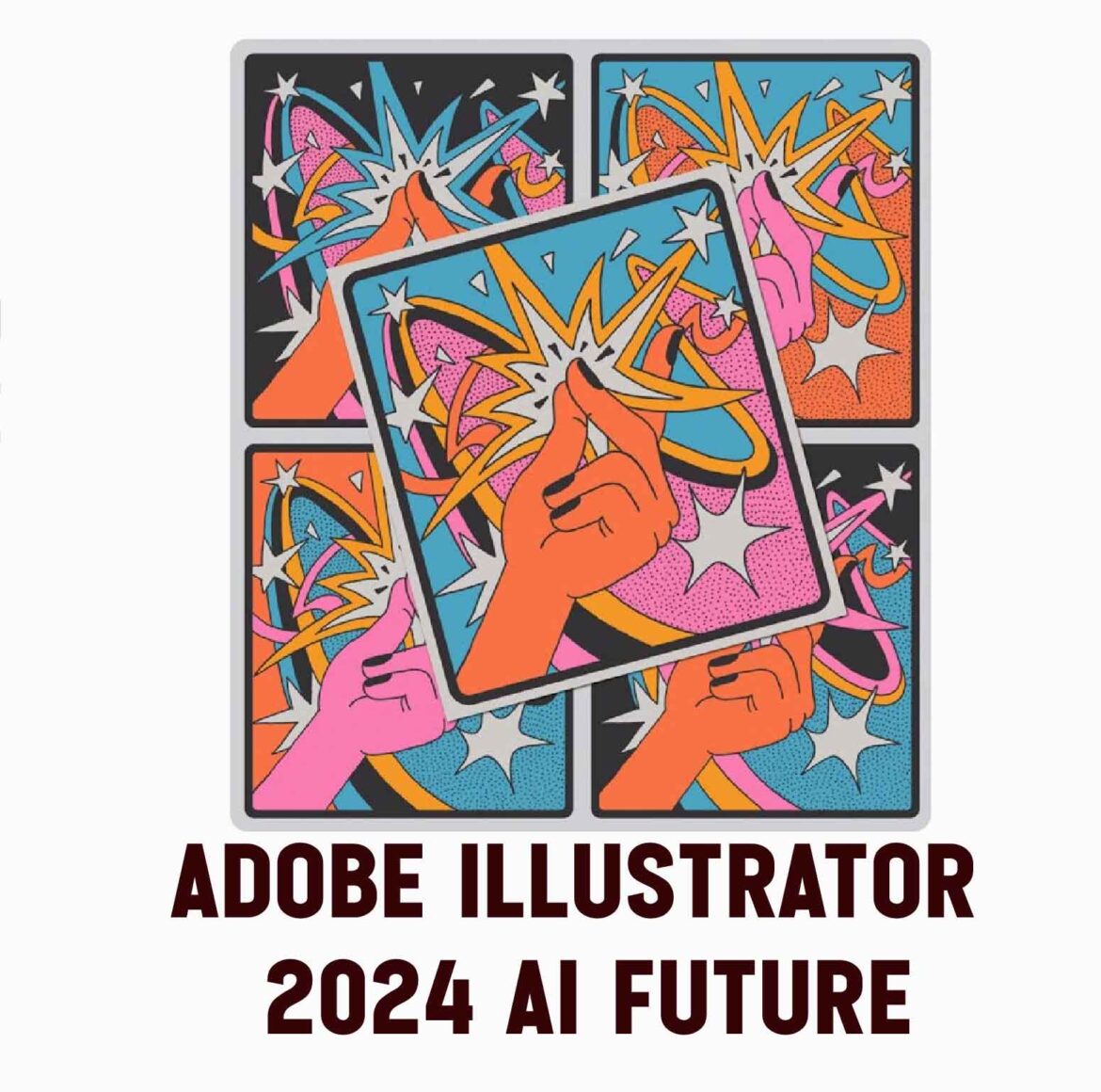For decades, Adobe Illustrator has been the industry standard for creating stunning vector graphics. With the release of Illustrator 2024, however, we’re witnessing a paradigm shift. This update isn’t just a collection of new features; it’s a full-fledged embrace of artificial intelligence (AI) that promises to revolutionize the design landscape. This article delves into the exciting possibilities unlocked by AI in Illustrator 2024, explores potential challenges, and ponders the future of design in this new era.
Unleashing Creativity: A Look at Illustrator 2024’s AI Powerhouse
The heart of Illustrator 2024 lies in its powerful AI engine, codenamed Firefly. Firefly leverages machine learning to understand design principles and user intent, paving the way for a slew of groundbreaking features:
-
Text-to-Vector: Imagine describing your design vision through text prompts. With Text-to-Vector, you can! Simply describe a scene, object, or concept, and Illustrator generates multiple customizable vector graphics based on your input. This feature breaks down creative barriers, allowing designers to explore a wider range of ideas effortlessly.
-
Retype (Beta): Struggling to find the perfect font for your project? Retype comes to the rescue. This AI-powered tool analyzes existing text and suggests a variety of stylistic variations. Experiment with different fonts, layouts, and effects, all within the familiar Illustrator interface.
-
Mockup (Beta): Visualizing your design on real-world objects can be time-consuming. Mockup tackles this challenge by using AI to create realistic mockups of your designs on various surfaces like t-shirts, mugs, or billboards. This allows for quicker iteration and client feedback, streamlining the design process.
-
Contextual Taskbar: Firefly isn’t just about flashy features. The Contextual Taskbar dynamically adapts based on your project and selection, offering relevant tools and shortcuts. This intelligent interface anticipates your needs and streamlines your workflow.
-
Smooth Tool: Creating perfectly smooth curves has always been a challenge. The Smooth Tool leverages AI to automatically refine and smooth out paths, eliminating tedious manual adjustments. This allows for a more natural and polished look in your artwork.
These are just a few examples. Illustrator 2024 promises a constant stream of new AI-powered features, pushing the boundaries of what’s possible within the software.
Beyond Efficiency: The Creative Spark of AI
While AI in Illustrator offers undeniable benefits in terms of efficiency and productivity, its true potential lies in its ability to spark creativity. Text-to-Vector, for instance, allows designers to explore visual concepts they might not have considered before. Imagine instantly generating a variety of vector graphics based on a simple text prompt – this can lead to unexpected breakthroughs and ignite the creative process.
Furthermore, AI can handle tedious and repetitive tasks, freeing designers to focus on the strategic and conceptual aspects of design. This allows them to delve deeper into problem-solving, user experience design, and crafting a brand’s visual identity.
However, it’s important to remember that AI is a tool, not a replacement for human creativity. The best results will come from a harmonious collaboration between human intuition and AI’s computational power.
The AI Revolution: Challenges and Considerations
While the future of AI-powered design looks bright, there are challenges to consider:
-
Maintaining Design Control: AI suggestions and automated processes can be fantastic, but designers need to retain control over their work. Illustrator 2024 should empower designers to customize and refine AI-generated outputs, ensuring the final product reflects their unique vision.
-
Addressing Ethical Concerns: AI models can perpetuate biases based on the data they’re trained on. Adobe needs to ensure that Illustrator’s AI features remain ethically sound and promote diversity in design outputs.
-
The Artist’s Role Evolving: Some may fear that AI will eventually replace designers altogether. This is unlikely. As AI automates repetitive tasks, it empowers designers to focus on higher-level thinking and strategic decision-making. The human touch will remain vital in creating meaningful and impactful designs.
A Collaborative Future: Designers and AI Working in Tandem
The future of design lies in collaboration. AI will handle the heavy lifting, streamlining workflows and freeing designers to focus on the strategic and creative aspects of their work. We can expect to see a shift towards design teams that leverage both human and machine intelligence to create truly innovative solutions.
Here are some potential scenarios of this collaborative future:
-
Design Teams with Specialized Roles: Design teams could evolve with specialists in AI tools, user experience, and traditional design disciplines, working together to create holistic and impactful design solutions.
-
Democratization of Design: AI-powered tools like Illustrator 2024 have the potential to democratize design. By simplifying complex tasks and making design creation more accessible, these tools can empower individuals with limited design experience to create impactful visuals. This could lead to a surge in user-generated content and a more design-centric society.
-
The Rise of Personalized Design: With AI’s ability to analyze user data and preferences, we can expect a rise in personalized design experiences. Imagine websites or applications that dynamically adapt their layout and visuals based on individual user preferences. This level of customization can create a more engaging and user-friendly experience.
-
Evolving Design Education: As AI transforms the design landscape, design education will need to adapt as well. Educational institutions will likely incorporate training on AI tools, user experience design thinking, and the ability to collaborate effectively with AI systems.
-
-
Conclusion: Embracing the AI Renaissance in Design
The integration of AI in Adobe Illustrator 2024 marks a significant turning point in the design industry. While challenges remain, the potential benefits are undeniable. By embracing AI as a powerful collaborator, designers can unlock new creative possibilities, streamline workflows, and create impactful and innovative design solutions. The future of design is a collaborative one, where human creativity and machine intelligence work hand-in-hand to shape the world around us.




